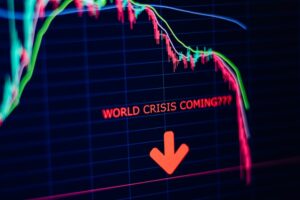In recent years, there has been a growing recognition of the need to address the challenges of poverty and environmental degradation. One of the key ways to achieve this is through sustainable finance, which involves the mobilization of financial resources towards socially and environmentally sustainable projects. Microfinance and green finance are two powerful tools that can be used to unlock sustainable finance and promote inclusive and sustainable development.
What is Microfinance?
Microfinance is a financial service that provides small loans, savings accounts, and other financial products to low-income individuals and communities who do not have access to traditional banking services. It aims to alleviate poverty and promote economic empowerment by providing financial resources to those who need it the most. Microfinance institutions (MFIs) often target women, rural communities, and other marginalized groups, as they are disproportionately affected by poverty and lack of access to financial services.
Microfinance has been widely recognized as an effective tool for poverty reduction. By providing small loans and other financial services, microfinance enables individuals and communities to start or expand their own businesses, improve their livelihoods, and escape the cycle of poverty. It also promotes financial inclusion and empowers individuals to make informed financial decisions, which can have a positive impact on their overall well-being.
What is Green Finance?
Green finance refers to financial products and services that support environmentally sustainable projects and initiatives. It aims to mobilize capital towards activities that promote climate change mitigation, adaptation, and the transition to a low-carbon economy. Green finance encompasses a wide range of financial instruments, including green bonds, green loans, and green investment funds.
The Intersection of Microfinance and Green Finance
The intersection of microfinance and green finance holds great potential for unlocking sustainable finance. Both microfinance and green finance share a common goal of promoting inclusive and sustainable development. By combining the strengths of these two approaches, we can leverage the power of finance to address both poverty and environmental challenges.
Microfinance institutions can play a critical role in promoting green finance. They have extensive networks and relationships with low-income individuals and communities, who are often the most vulnerable to the impacts of climate change. By integrating green finance into their product offerings, MFIs can provide access to affordable and sustainable financing for renewable energy projects, energy-efficient technologies, and other environmentally friendly initiatives.
Sustainable Development Goals and Renewable Energy Financing
The Sustainable Development Goals (SDGs), adopted by the United Nations in 2015, provide a roadmap for achieving a more sustainable and equitable world by 2030. Goal 7 of the SDGs focuses on ensuring access to affordable, reliable, sustainable, and modern energy for all. Renewable energy plays a crucial role in achieving this goal, as it is a clean and sustainable source of energy that can help reduce greenhouse gas emissions and mitigate the impacts of climate change.
However, financing renewable energy projects can be a major challenge, especially in developing countries where access to capital is limited. This is where microfinance and green finance can make a significant difference. By providing affordable and accessible financing options, microfinance institutions can enable individuals and communities to invest in renewable energy technologies, such as solar panels and biogas digesters. These investments not only contribute to the achievement of Goal 7, but also have a positive impact on other SDGs, such as poverty reduction, gender equality, and climate action.
The Benefits of Green Microfinance
Green microfinance offers a wide range of benefits, both for individuals and communities, as well as for the environment. For individuals, green microfinance provides access to affordable and sustainable financing options, which can help improve their living standards and enhance their economic opportunities. It enables them to invest in renewable energy technologies, energy-efficient appliances, and other environmentally friendly solutions, which can lead to cost savings and increased productivity.
For communities, green microfinance can contribute to the development of local renewable energy infrastructure, such as community-based solar power plants and mini-grids. This not only provides access to clean and reliable energy but also creates employment opportunities and stimulates local economic development. Moreover, by reducing reliance on fossil fuels, green microfinance can help mitigate the impacts of climate change and improve the resilience of communities to extreme weather events.
Challenges at the Intersection of Microfinance and Green Finance
While the intersection of microfinance and green finance holds great potential, there are also several challenges that need to be addressed. One of the main challenges is the lack of awareness and knowledge about green finance among microfinance institutions and their clients. Many MFIs are not familiar with the concept of green finance and may not fully understand its potential benefits and opportunities. Similarly, many low-income individuals and communities may not be aware of the financial products and services available to them for investing in renewable energy and other environmentally friendly initiatives.
Another challenge is the limited availability of financial resources for green microfinance. While there is a growing demand for green finance, there is a shortage of capital to meet this demand. This is especially true in developing countries, where access to finance is already limited. In order to unlock sustainable finance, it is crucial to mobilize additional resources and create innovative financing mechanisms that can attract both public and private investments towards green microfinance.
How to Change the Outcome
To overcome these challenges and unlock sustainable finance with microfinance and green finance, several actions can be taken. First and foremost, there is a need to raise awareness and build capacity among microfinance institutions and their clients about green finance and its potential benefits. This can be done through training programs, workshops, and other knowledge-sharing platforms.
Secondly, it is important to strengthen the collaboration between microfinance institutions, green finance experts, and other stakeholders, such as government agencies, development organizations, and investors. By working together, these stakeholders can develop innovative financing mechanisms, establish risk-sharing arrangements, and create enabling policy frameworks that can support the growth of green microfinance.
Kiva and the Kiva Zip Program
One successful example of the intersection of microfinance and green finance is the Kiva Zip program. Kiva is a non-profit organization that connects lenders with borrowers to alleviate poverty through microfinance. The Kiva Zip program, launched in 2012, focuses on providing zero-interest loans to entrepreneurs and small business owners in the United States for green and sustainable projects.
Through the Kiva Zip program, borrowers can access affordable financing for a wide range of green initiatives, including renewable energy projects, sustainable agriculture, and eco-friendly products and services. The loans are funded by individual lenders from around the world, who can lend as little as $25 to support a borrower’s project. This innovative approach not only provides financial resources to entrepreneurs but also creates a global community of lenders who are committed to promoting sustainable development.
Conclusion
Microfinance and green finance are powerful tools that can be used to unlock sustainable finance and promote inclusive and sustainable development. By combining the strengths of these two approaches, we can leverage the power of finance to address both poverty and environmental challenges. Green microfinance offers a wide range of benefits, both for individuals and communities, as well as for the environment.
However, there are also several challenges that need to be addressed in order to fully unlock the potential of microfinance and green finance. By raising awareness, building capacity, and strengthening collaboration, we can overcome these challenges and create a more sustainable and equitable future for all.







